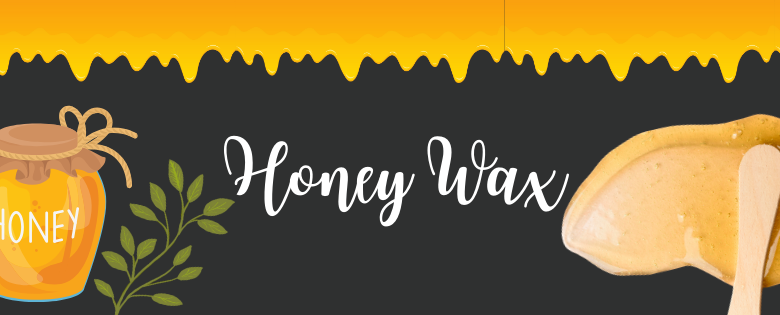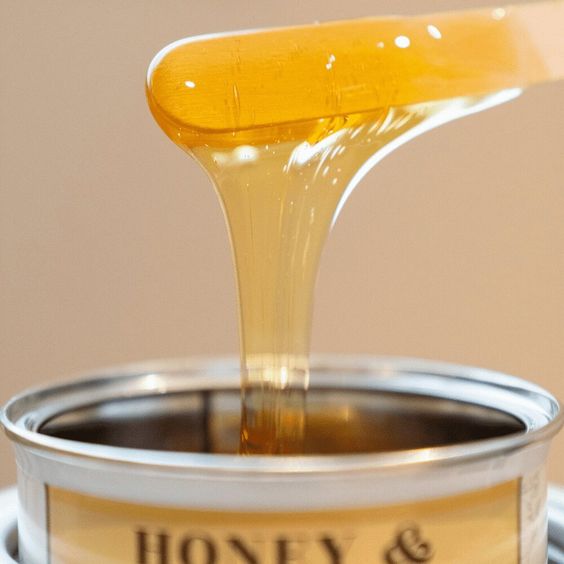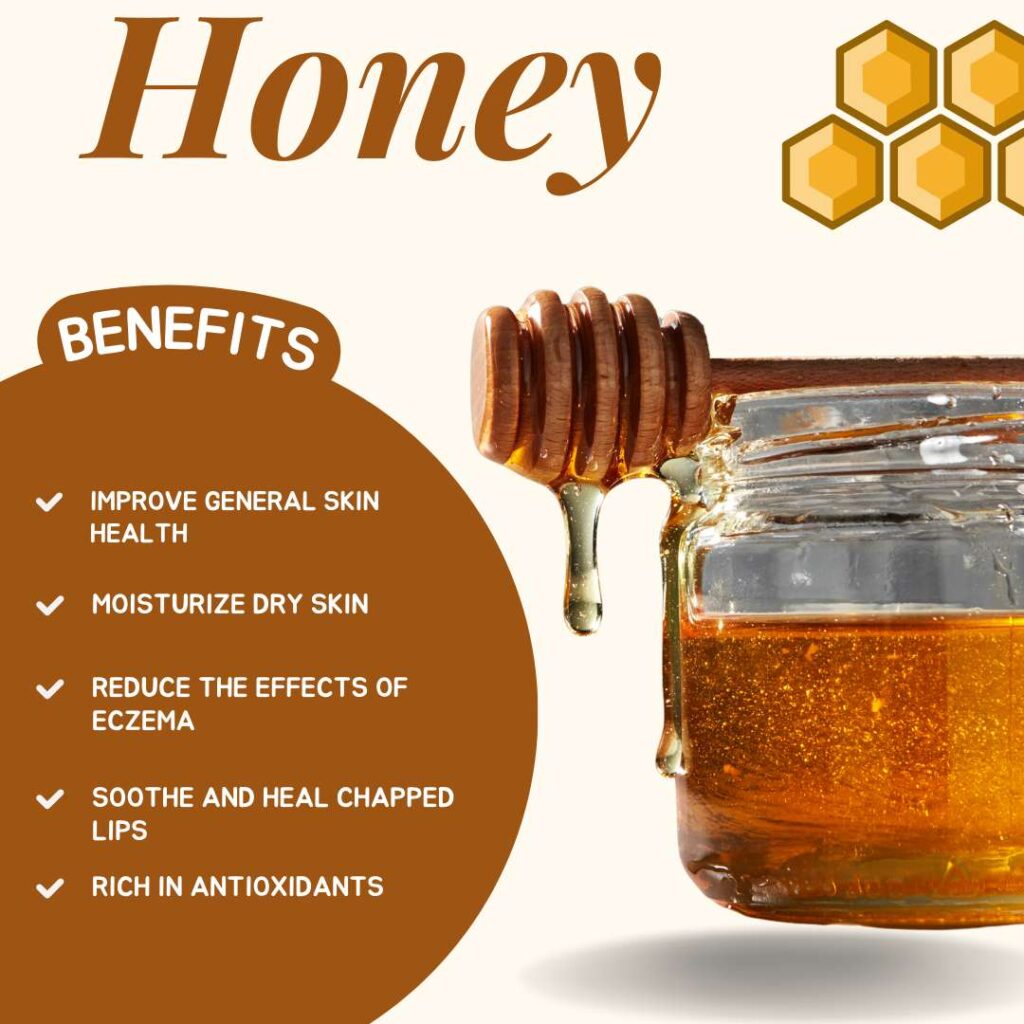
Honey wax is a type of natural waxing material. Honey or sugar hair removal wax is a safe and inexpensive way to remove body hair. Honey wax is a natural option for waxing. This is a type of wax made with honey. This natural ingredient offers many benefits for the skin. It also makes a popular choice at salons and homes.
History and origin of Honey wax
Honey wax has been used in skincare since ancient times. The Egyptians considered honey a royal and unique food and used it for cosmetics and treatments.
Waxing is the oldest hair removal method practiced across many cultures. In the 20th century, hot and cold waxing methods became more popular. Today, waxing is a common method of hair removal in salons and at home.
Warm Soft Wax
Soft warm wax is cream-based and used for strip waxing. It is gently warmed, and a thin layer is applied over the skin.
A cloth strip is pressed on the skin and removed, taking the hairs with it. The spreadable wax is often used to cover larger areas like the legs and arms. While extremely effective at picking up even the finest of hairs, soft wax also sticks to the skin. So it should only be applied once per area to avoid irritation.
“Cream-based warm waxes are gentler on the skin,”

Warm Hard Wax
Hard wax is an effective option both for areas with thicker hair and thin hair. The wax is applied warmly and hardens as it cools. It’s also known as strip-free wax. In its hardened form, it acts as the strip itself. A small amount of pre-epilation oil typically goes on the skin after it’s cleansed to protect it from the wax. Shays explains that after warming the wax to a spreadable state, it “hardens to a flexible material that is pulled off by a ‘brim/lip’ created by the provider.”
Hard wax is applied in a thicker layer than soft wax, but also in the direction of hair growth.
“Pulling in the wrong direction of hair growth can cause hair to break and become ingrowing,”
The wax grabs onto the hairs in a wrapping manner as it hardens rather than sticking to the skin like soft wax. This makes it more suitable for smaller, more sensitive areas like the lip, nose, underarms, and bikini area.
When used on larger areas, like the legs, it can create breakage of hair towards the end of the pull.

Its gentle nature is great for those with sensitive skin, but may not be strong enough to grab the hairs from the bulk, which means you might have to go over a single area multiple times.
“Cheaper varieties of hard wax can cool down to be brittle and not flexible,”
This may create a mess and an inefficient wax. For this reason, make sure to get a high-quality wax if you plan to wax yourself.
Cold Soft Wax
Cold, soft wax can typically be purchased in a jar or a pre-made waxing strip. For the ones that come in a jar or pot, all you need is a craft stick to scoop it out and apply it directly on the skin.
What’s nice about this type of wax is that you avoid the risk of burning your skin. It can be trickier to apply an even layer and, since it also adheres to the skin, can irritate if you go over the same area more than once.

Benefits of Honey Wax
There are some benefits of using honey wax:
Soothe and heal chapped lips
Beeswax and honey are a dynamic duo for cracked, dry lips.
Soften a little beeswax in your hand, and rub it on chapped lips for natural hydration.
Reduce the effects of eczema
Research shows that a combo of beeswax, honey, and olive oil is effective at soothing and promoting healing for skin conditions like eczema.
Slather your irritated, itchy bits in a product like this lavender and honey hand cream, which contains honey, shea butter, and tons of other moisture-rich and soothing ingredients that help combat dry skin.
Soothe and reduce acne
Since beeswax and honey are both anti-inflammatory and anti-bacterial, they help fight acne and soothe irritated skin.
If you’re acne-prone, try honey as a facial cleanser. Wet your face with warm water, scoop a 1/2 teaspoon of honey into your hands, and massage the honey over your face like you would a regular cleanser. Rinse it off, apply toner if you use one, then follow with a moisturizer.

Moisturize dry skin
Honey and beeswax help kick dry skin to the curb by drawing in moisture from the air and locking it in. You could lather your body in honey, but it might be uncomfortable.
Fade scars
Honey contains a small amount of hydrogen peroxide, which can help fade old scars and reduce hyperpigmentation.
Apply honey as a spot treatment every day or every other day to lighten pesky blemishes. Let it sit on your skin for 20 minutes, and rinse.
Improve general skin health
Treat yourself to a honey face mask for ultra hydration and nourishment when you need it.
Spread a tablespoon of honey on clean skin, and let it sit for 20 minutes. Add a teaspoon of coconut oil for more moisture, or add 2 to 3 drops of lavender essential oil while you make a mask.

Get shiny, healthy hair
Honey provides maximum moisture for your dry, damaged hairs too. This mask is best for your skin.
In a small saucepan, combine 1 cup olive oil, 1/2 cup beeswax, and 1 tablespoon each of coconut oil and honey, and melt over medium heat. Pour it into a heat-proof container, and let it harden for 20 to 30 minutes.
Apply the mask to your hair in the amounts until your head is coated. Then, forget about it.
Read, get knowledge, or scroll through Enigma Blogs for at least 30 minutes, but a maximum of three hours. Then rinse and shampoo.
Enjoy! Shiny, happy hair.
Does Waxing with Honey Have Permanent Results?
Let’s start with one major warning. Honey waxing, or any waxing for that matter, will not permanently remove the hair.
“Yes, honey is effective for removing facial hair to a certain degree, but it does not destroy the hair follicle.”
To permanently remove the hair follicle, you have to be able to destroy the base of the hair follicle, which is where the hair gets its blood supply and ability to regenerate.” And to achieve that, you need some energy-based treatment, such as lasers or IPL.
How to DIY Honey Wax?
Many salons offer honey waxing; however, if it’s something you would like to do at home, it’s simple to make your honey wax.
First, find a recipe
Combine one part lemon juice to four parts honey (about one tablespoon to four tablespoons) in a pot.
Keep the Pot on the stove and heat until warm, though not boiling.
“You can also add some sugar to the mix to act as an extra binding agent,”
Then, let the mixture cool slightly
Always test it on the inside of your wrist to make sure it’s at a comfortable temperature, she suggests.
Spread over the proper area.
Using a wooden popsicle stick, apply a small amount of the honey mixture to the area you want to wax and let it dry.
Wipe clean
Some experts are against using strips to remove the mixture. They suggested that wiping off the dried honey with a moist, warm washcloth will be sufficient to remove both the mixture and any unwanted hair it’s picked up, without any risk of ripping the gentle and sensitive skin on your face.
Clean off the affected area
Rinse the area to remove any leftover residue and follow with moisturizer. Any good moisturizing cream strengthens your skin barrier and satisfies thirsty skin.

Tips for Using Honey Wax
Test the Temperature
Before applying the wax to a larger area, test it on a small patch of skin to ensure it is not too hot.
Pull the skin taut
Pulling the skin taut can help to minimize discomfort and reduce the risk of skin damage.
Avoid Re-Using Strips
To prevent the spread of bacteria, avoid re-using strips.
Exfoliate Regularly
Exfoliating the skin regularly can help to prevent ingrown hairs.
Final thoughts
Honey wax is a natural and effective way to remove unwanted hair with no skin damage.
Honey waxing remains a popular choice due to its gentle and moisturizing properties. It can be used with or without strips and works for hair types and areas. Although honey waxing is not permanent, regular use can result in fine hairs over time. Diy honey waxing is easy at home with a simple recipe, offering skin nourishment.
FAQs
Is honey wax safe for sensitive skin?
Yes, Honey wax is generally safe for sensitive skin. The natural ingredient in honey wax can help soothe and nourish the skin
How often can I use honey wax?
You can use honey wax every 4-6 weeks, depending on your hair growth rate.
Is honey wax better than traditional wax?
Honey wax is considered more gentle and moisturizing than other traditional wax. It may also depend on individual skin sensitivity and hair type.



